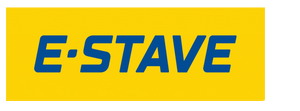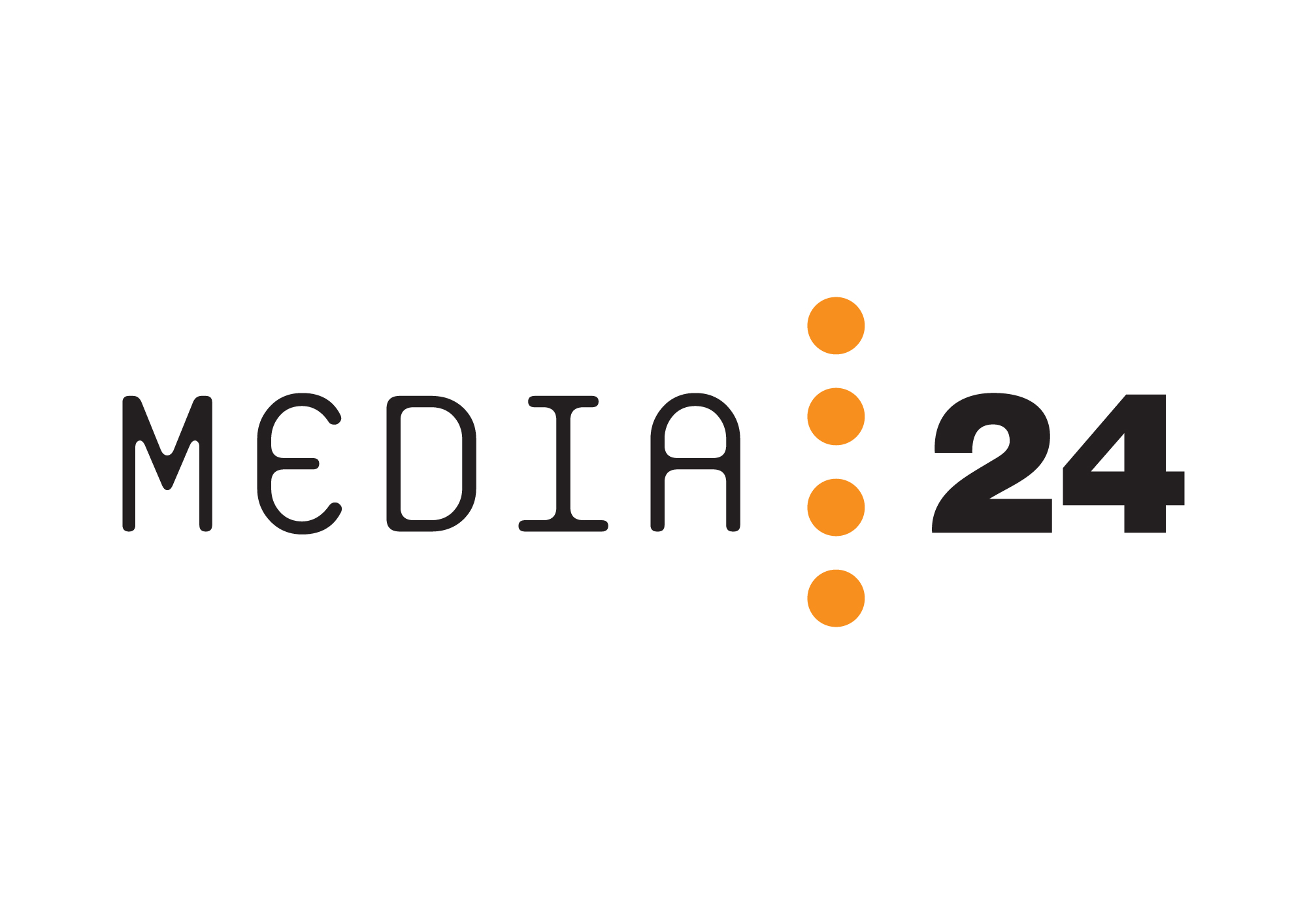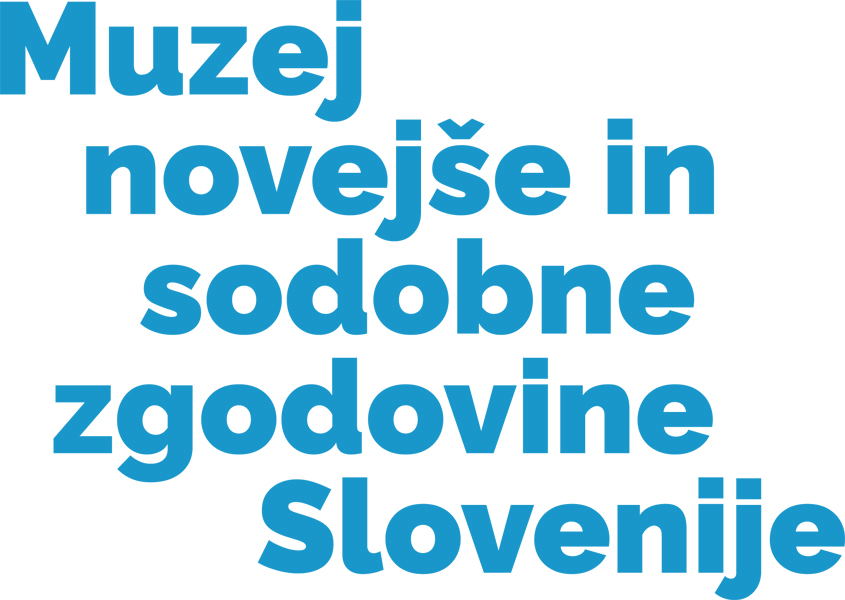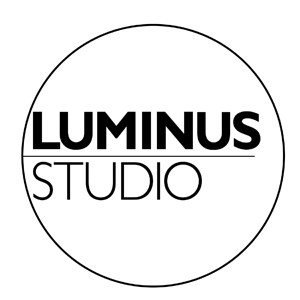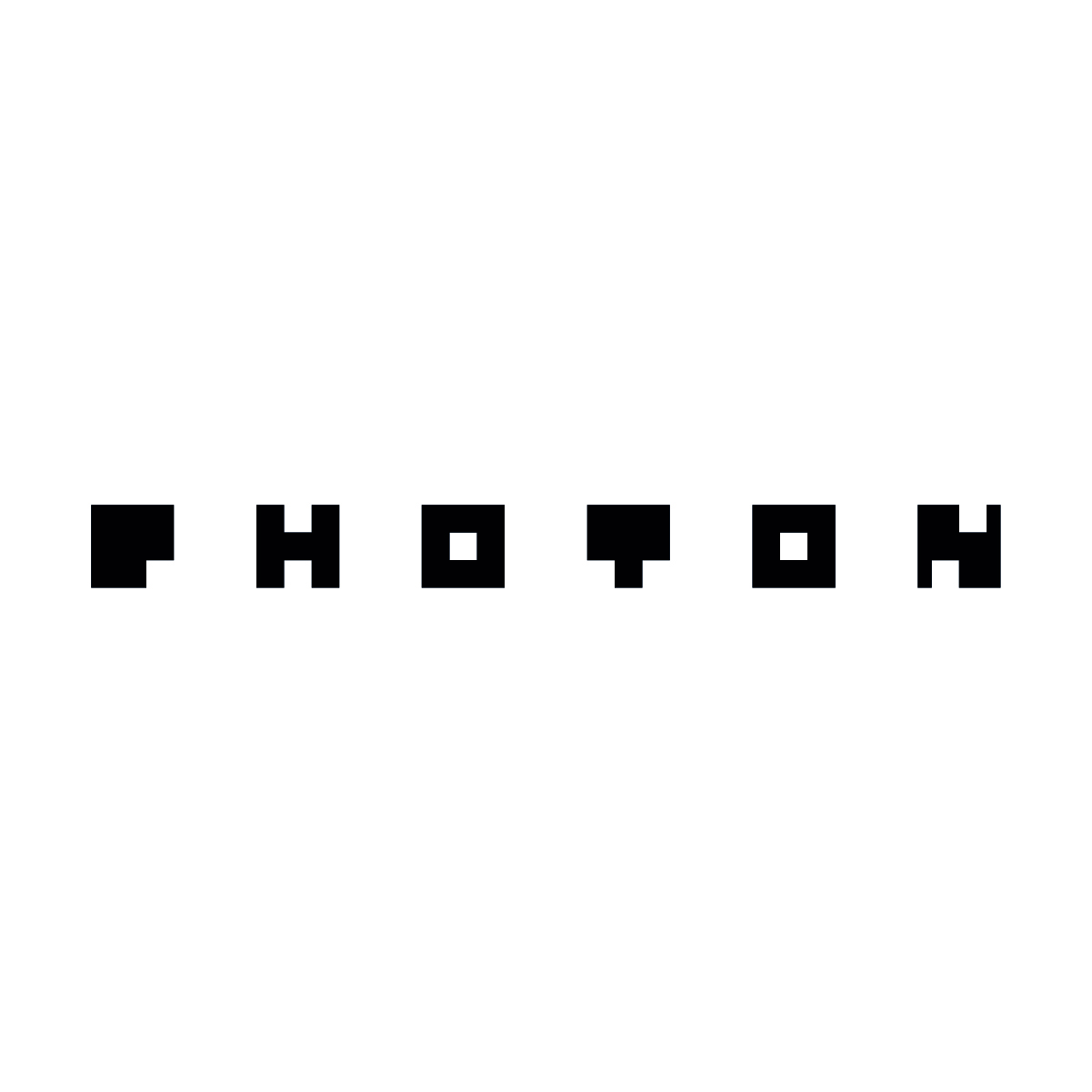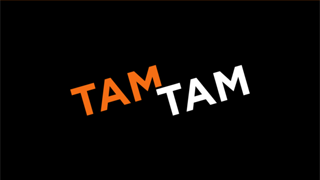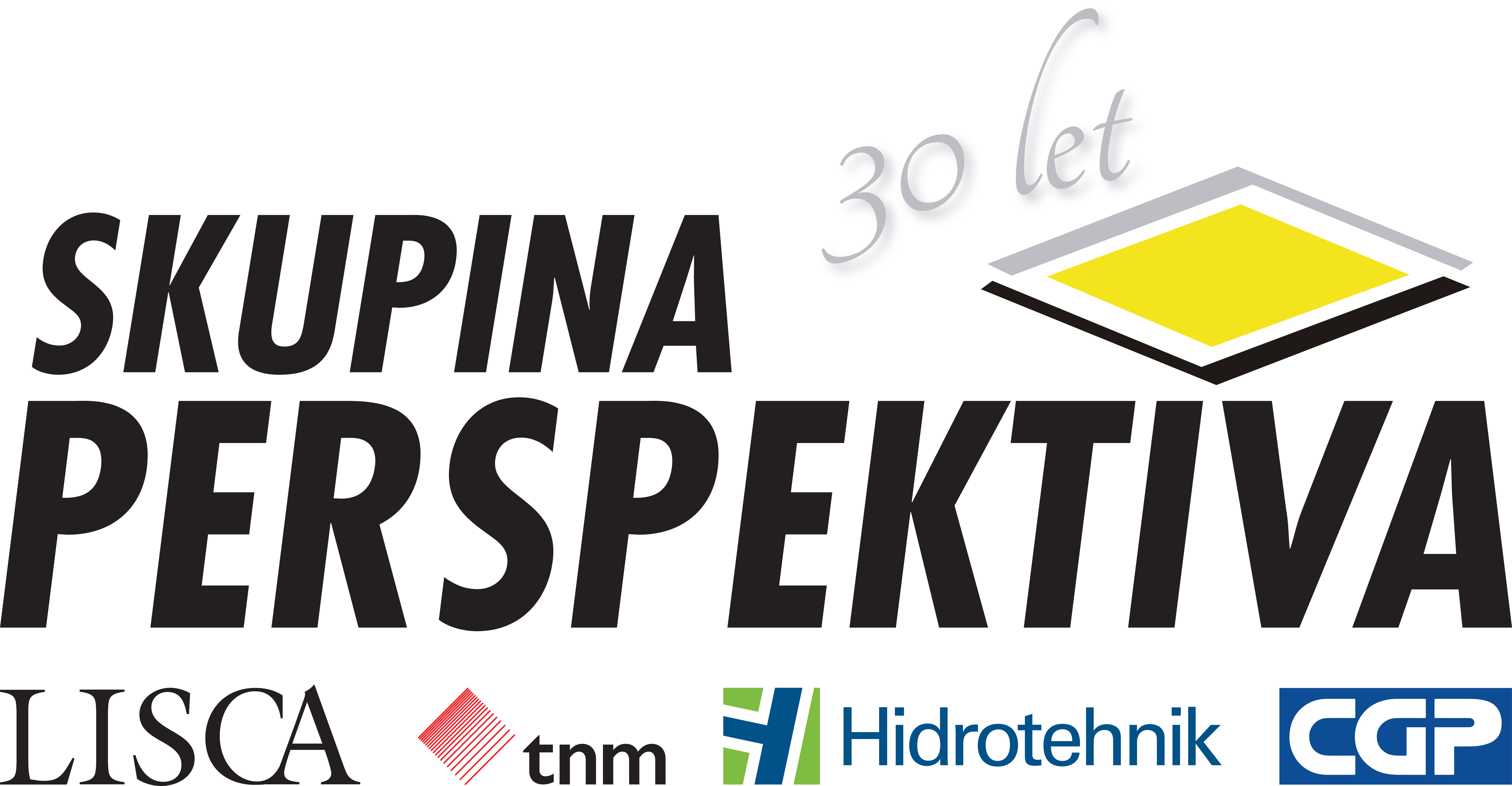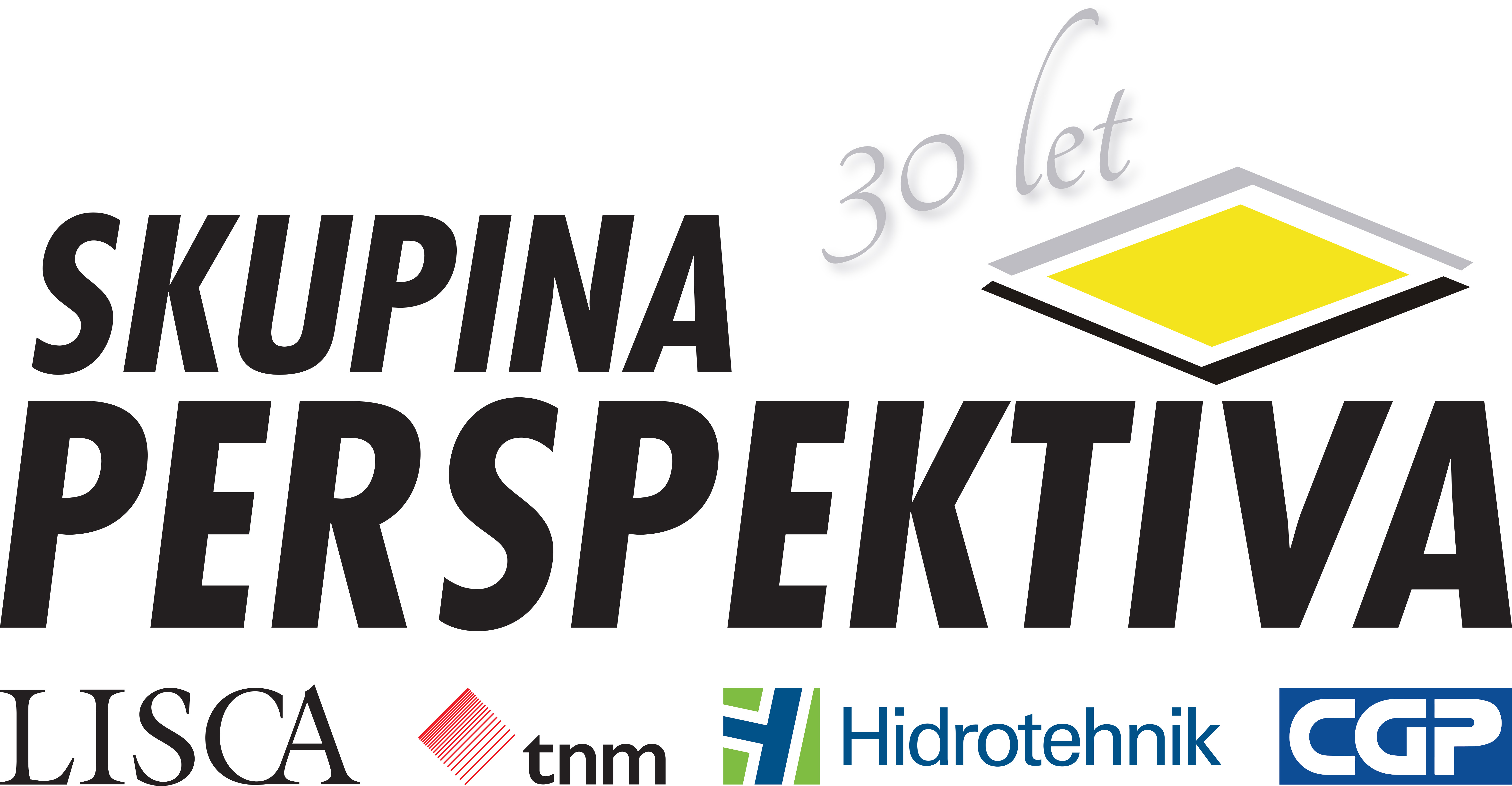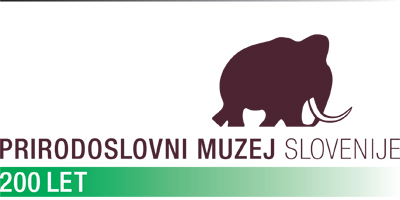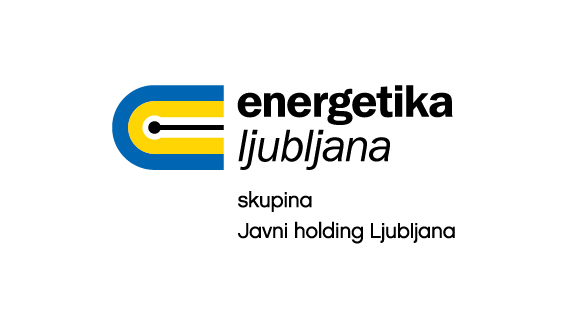Chapter One to Three

Chapter Four, The Echo of Our Voices (Jordan, 2024), is on view at the Galerija Fotografija gallery.
In cooperation with Galerija Fotografija and WILLAS Contemporary
A major exhibition by one of the greatest environmental photographers of our time, Nick Brandt (1964).
The Day May Break is the first part of a global series portraying both people and animals that have been impacted by environmental degradation and destruction. The series was shot in different locations around the world – countries that are the least polluting but the most climate vulnerable. The first two chapters were photographed in Kenya, Zimbabwe (2020) and Bolivia (2022), while SINK and RISE, dedicated exclusively to humans, was shot in Fiji. Photographed underwater, the local people in these photographs are representatives of the many people whose homes, land and livelihoods will be lost in the coming decades as the sea level rises.
But despite their losses, the subjects – both people and animals – have nevertheless survived; and thus the series also offers hope and a possibility for the future.
A landmark body of work by one of photography’s great environmental champions. Showing how deeply our fates are intertwined, Brandt portrays people and animals together, causing us to reflect on the real-life consequences of climate change. Channelling his outrage into quiet determination, the result is a portrait of us all, at a critical moment in the Anthropocene.
Phillip Prodger, curator, author, photo historian
Former Head of Photographs at the National Portrait Gallery, London
Nick Brandt (1964) was born and raised in London, where he originally studied painting and film at Saint Martin’s School of Art.
While directing Michael Jackson's epic Earth Song video in Tanzania in 1995, Nick fell in love with animals and the East African land.
A few years later he began his first photographic series, On This Earth (2000–05), which comprises a trilogy together with the later series, A Shadow Falls (2009) and Across the Ravaged Land (2013).
On This Earth was published in a book form in 2005 with introductions by the conservationist and primatologist Jane Goodall, author Alice Sebold, and photography critic Vicki Goldberg.
Later series, Inherit the Dust (2016) and This Empty World (2019), were all also photographed in East Africa.
In 2010, Brandt co-founded Big Life Foundation, a non-profit in Kenya/Tanzania that employs more than 350 local rangers protecting 1.6 million acres of the Amboseli/Kilimanjaro ecosystem.
His photographs focus on the impact of environmental destruction and climate breakdown, for both some of the most vulnerable people and for the animal and natural world.
Since 2020, he has been working on The Day May Break, an ongoing global series that portrays people and animals impacted by climate change and environmental destruction. Chapter One (2021) was photographed in Kenya and Zimbabwe, Chapter Two (2022) in Bolivia. SINK / RISE, Chapter Three (2023) was taken in Fiji, and The Echo of Our Voices, Chapter Four (2024) in Jordan.
Brandt has had solo gallery and museum shows around the world, including New York, London, Berlin, Stockholm, Shanghai, Oslo, Paris and Los Angeles.
His photographs form part of numerous public and private collections.
So, the day may break, and the world may shatter. Or perhaps, the day may break, and the dawn still come.
Admission
Adult ticket: EUR 10/person
Reduced admission: EUR 7/person (for visitors aged under 25 and 65+)
Free admission: children under 10, holders of EU Disability Card. persons accompanying disabled people, tourist guides, unemployed persons, as well as ICOM, PRESS, SMD card holders.
Public guided tour: admission fee, NO surcharge for guided tour
Adult groups (10 or more persons):
Guided tour: admission + EUR 25 (surcharge for the tour)
School visits (10 or more persons):
Admission: EUR 5/person
Guided tour: admission + EUR 20 (surcharge for the tour)
Books
Nick Brandt: The Day May Break, Chapter One: EUR 65
Nick Brandt: The Day May Break, Chapter Two: EUR 69
Nick Brandt: The Day May Break, Chapter Three: EUR 69
15% discount on the three-book set
Nick Brandt: The Day May Break
10,00 EUR
7,00 EUR * * EUR for younger than 25 and older than 65, as well as pensioners.

15th Slovenian Biennial of Illustration
In cooperation with the Slovenian Association of Fine Arts Societies (ZDSLU), Illustration Section
Exhibition curator: Petra Kosi (ZDSLU)
Launched in 1993, the Slovenian Biennial of Illustration was founded by the Illustrators' Section of the Slovenian Association of Fine Arts Societies (ZDSLU). The Biennial, with its extensive media coverage, contributes greatly to the promotion of illustration as an important artistic discipline that plays a responsible educational role, bringing stories to life as well as providing visual cues that help readers connect emotionally with the material and cement understanding. The exhibition presents works by Slovenian illustrators of all ages and publications issued by Slovenian publishing houses over the past five years. The selection is made by a five-member judging panel based on the entries received in the call for applications. The judging panel also selects the winners of the Hinko Smrekar Award, Slovenia's most prestigious prize for achievements in illustration. A special focus is placed on this year's winner of the 2024 Lifetime Achievement Award, illustrator, painter, graphic artist and designer Tomaž Kržišnik. The prize is awarded posthumously.
Tatjana Pregl Kobe about this year's recipient of the Lifetime Achievement Award: “Slovenian illustrator, painter, graphic artist and designer Tomaž Kržišnik (1943–2023) received his MA in book illustration from the Warsaw Academy of Fine Arts in 1968. He belonged to the trailblazing generation that trained at various European academies and was responsible for introducing diversity into the field of illustration. Innovativeness is reflected in not only his illustrations, drawings, puppets and set designs, but also his visual signs and posters, spatial installations, as well as glass and ceramic products. He gained national recognition with his exceptional, multifaceted and always distinctly original drawings, as well as with well-considered, colourful graphic prints and illustrations. He broke new ground in combining his drawn- or painted images with typographic elements to create thematically rich, compelling and unique visual messages, book objects and illustrations.”
Admission
Adult ticket: EUR 6 /person
Discounted ticket: EUR 4 */person (*visitors under 25 and over 65)
Free admission: children aged 6 and under, EU Disability Card holders, valid Museum Card holders
Guided tours extra charge (for groups of 10 persons and more): ticket price + surcharge EUR 20 /group
Public guided tour: ticket price, NO extra charge
Children's workshop with guided tour: EUR 6 /person
Catalogue: EUR 15
15th Slovenian Biennial of Illustration
6,00 EUR
4,00 EUR * * EUR for younger than 25 and older than 65, as well as pensioners.
In cooperation with the Slovenian Association of Fine Arts Societies (ZDSLU), Illustration Section

Odprti globus / Going Global
Umetnost milenijske generacije / Millennial generation art
Curator: Katarina Hergouth, MA (Art History), Exhibition Programme Manager at Cankarjev dom
Kuratorka: Katarina Hergouth, mag. um. zgod., vodja razstavnega programa CD
Z deli se predstavljajo Katarina Caserman, Evgen Čopi Gorišek, Meta Drčar, Živa Drvarič, Katja Felle, Jure Kastelic, Gašper Kunšič, Dino Kužnik, Nana Wolke, Jana Zornik.
Odprti globus je skupinska razstava desetih slovenskih umetnic in umetnikov, ki sta jim skupna generacijska pripadnost ter dejstvo, da živijo in delujejo živijo v tujini, kjer so uspešno vpeti v mednarodno umetniško prizorišče in prisotni na tamkajšnjem umetniškem trgu. Razstava bo na enem mestu predstavila zanimive umetniške produkcije avtorjev, ki čeprav niso neznani slovenskemu razstavnemu področju, razstavljajo večinoma v tujini. Večina del je nastala v zadnjih letih, nekatera bodo celo razstavljena prvič.
Rojeni med letoma 1984 in 1996 so prvotno umetniško izobrazbo in formiranje pridobili doma v Sloveniji; večina jih je na Univerzi v Ljubljani zaključila diplomski študij (prva bolonjska stopnja), nato pa so študij (magistrski študij, druga bolonjska stopnja) nadaljevali v tujini, kjer so ostali. Več jih je študiralo na pomembnih umetniških akademijah (kot so na primer londonski Royal Collage of Art, Goldsmiths, Central Saint Martins), ki so jim služile kot dobra odskočna deska za uspešen začetek umetniške poti, drugi so se v umetniško sceno uspešno vpeli tudi drugače (samoiniciativno povezovanje, razstave in sodelovanje z galeristi, kuratorji, drugimi umetniki).
Po besedah kuratorke, Katarine Hergouth izbrana deseterica umetnikov zaobjema pestrost različnih umetniških izrazov, tem in medijev. »Njihova dela so komentar sodobnega, digitaliziranega sveta, hkrati pa se dotikajo večnih, brezčasnih tematik.«
Razstava ne temelji na iskanju skupnih točk v opusih umetnic in umetnikov, temveč jim želi ponuditi prostor za vzpostavljanje vezi nazaj, iz tujine v domovino. Razstava bo na enem mestu ponudila ogled izbranih zanimivih umetniških produkcij, pri čemer bo odpirala tudi vprašanja, kako je generacija, ki ji pripadajo, vplivala na njihovo dozorevanje (tako osebnostno kot umetniško) – generacija, ki je odrasla skupaj s prehodom iz analognega v digitalni svet, za katero sta bila študij in odhod v tujino lažja in dostopnejša kot kdaj koli prej, ki pa se je hkrati soočila z nestabilnim zaposlovanjem in stanovanjsko problematiko – ter vprašanja, kakšen pomen in vlogo imata odhod in življenje v tujini ter kakšna ostaja povezava z domovino.
Umetniške prakse in opusi izbranih umetnikov so precej različni, tako v teoretskih izhodiščih kot uporabljenem mediju (četudi je prevladujoč medij slikarstvo, dodatno bodo na razstavi na ogled še kiparska dela in prostorske instalacije, fotografije in oblikovanje), delo vsakega pa odraža jasno usmeritev, osredotočenost in predanost.
Delo deseterice umetnikov je izstopajoče, kar dokazujejo njihovi številni mednarodni uspehi in priznanja, povabila k samostojnim in skupinskim razstavam v ključnih umetniških ustanovah in zbirkah sodobne umetnosti ter nenazadnje tudi odkupi njihovih umetniških del.
Umetnice in umetniki, ki se predstavljajo na razstavi, živijo in delujejo v različnih evropskih državah (Nemčiji, Franciji, Italiji, Združenem kraljestvu) pa tudi v Severni Ameriki (New York), pogosto se tudi selijo oziroma delujejo na več lokacijah hkrati. Ta vzorec – pridobitev prvotne umetniške izobrazbe doma, odhod v tujino in delovanje v mednarodnem umetniškem prostoru – ni značilnost le slovenskih umetnikov in tudi ne le milenijske generacije (več slovenskih umetnikov in umetnic je zelo uspešnih v tujini), temveč gre za razširjen, skoraj standarden vzorec sodobnega umetniškega sveta.
Razstavo je arhitekturno oblikovala večkrat nagrajena arhitektka Sara Badovinac.
Izobraževalni program ob razstavi je oblikoval kolektiv Oloop.
Izobraževalni program z naslovom Umetnik za en dan, ki spremlja razstavo Odprti globus, ponuja vsebine, ki bodo otrokom in mladostnikom pomagale avtentično doživeti sodobno umetnost, obenem pa jim želi razstavljena dela približati sproščujoče, igrivo in povezovalno. Programske aktivnosti ne bodo klasično izobraževale o umetnosti, temveč bodo mladi obiskovalci in učitelji spoznali, kako jih umetnost in ustvarjanje lahko podpreta pri samovrednotenju, umirjanju, doživljanju prijetnih občutkov, sproščanju, refleksiji in izražanju. Program sestavljajo štirje izobraževalni sklopi – Povezovalci svetov (povezovalno ustvarjanje), Čustveni raziskovalci (izražanje čustev), Kreativni alkimisti (ustvarjalna izraznost), Junaki soustvarjanja (sodelovalno ustvarjanje), ki se po vsebinah in ciljih razlikujejo ter so namenjeni različnim osnovnošolskim triletjem oziroma srednješolcem.
Spremljevalni program je zasnovala in izvaja kuratorska ekipa ETC magazine.
Ponedeljek, 7. oktobra, ob 18. uri
Stacionarni telefon/ Landline
Pogovor z umetnicami in umetniki, ki so v Sloveniji našli svoj drugi dom.
Sodelujejo: Simon Chang, Ana Čavić, Agate Lielpetere, Ilija Prokopiev
Na pogovoru se bomo srečali z umetnicami in umetniki, ki so jih življenjske poti vodile v Slovenijo, kjer so našli svoj drugi dom. S tem razširjamo temo razstave Odprti globus in obračamo pogled k lokalnemu umetniškemu prizorišču. Med drugim nas bo zanimalo, kateri razlogi mednarodne ustvarjalce in ustvarjalke vodijo k nam, s katerimi izzivi se tukaj srečujejo, kako jih je sprejela tukajšnja umetnostna skupnost ter kakšno izhodišče je Slovenija za mednarodno umetniško kariero.
Čet, 7. novembra, ob 18. uri
Vroči telefon/ Hotline
Hitri obiski ateljejev na daljavo
Umetnice in umetniki, združeni na razstavi Odprti globus, živijo na različnih delih sveta, ta pa še nikoli ni bil manjši kot danes. Na dogodku bomo zato po vrsti na daljavo obiskali nekaj ateljejev sodelujočih ustvarjalk in ustvarjalcev ter se z njimi sprehodili po prostorih, v katerih ustvarjajo. Obiskovalke in obiskovalci boste na razstavi videna dela tako lahko umestili v ateljeje, kjer so nastajala, dobili vpogled v ustvarjalni postopek umetnic in umetnikov ter s tem morda tudi v dela, ki šele nastajajo.
Javna vodenja po razstavi: vsak četrtek ob 18. uri, prvo javno vodenje bo 19. 9. 2024
Odprti globus / Going Global
8,00 EUR
6,00 EUR *
In collaboration with:
Photon galerija
NiCOLETTi (London)
Tabula Rasa Gallery (Beijing, London)

This year, Cankarjev dom will once again Summer Museum Night on June 15th. The exhibition will be open until midnight and admission free.
Exhibition curators: Peter Pakesch (Maria Lassnig Foundation), Katarina Hergouth (Cankarjev dom)
Exhibition architect: Sara Badovinac
In commemoration of the 10th anniversary of the death of Maria Lassnig (1919–2014), one of Austria’s most important and internationally renowned artists, Cankarjev dom is presenting the artist's first solo exhibition in Slovenia.
Lassnig is particularly known for the depth of psychological expression in her self-portraits and her concept of Body Awareness. Throughout her remarkable artistic career she produced a prolific body of paintings and drawings, and also pursued filmmaking (animated film). She engaged in a focused dialogue with her art, which always constituted the pivotal strand of her life. Even though Lassnig’s work gained well deserved public recognition at a relatively late stage in her life, today her works form an important part of the permanent collections of major museums (MoMA in New York City, The Essl Collection, Museum Ludwig in Cologne, the Albertina Museum, etc.).
The exhibition at Cankarjev dom’s Gallery primarily features Lassnig’s drawings, as well as a selection of oils on canvas and several short animated films.
Presented in collaboration with: Maria Lassnig Foundation, Austrian Cultural Forum, Neue Galerie Graz, sixpackfilm and others.
»The drawing is closest to the idea.«
Maria Lassnig, 1992
»My art begins with people, and goes out to people.«
Maria Lassnig, 2009
Maria Lassnig
6,00 EUR
4,00 EUR * * EUR for younger than 25 and older than 65, as well as pensioners.

Slovenian Punk & Photography
Janez Bogataj, Božidar Dolenc, Vojko Flegar, Dušan Gerlica, Siniša Lopojda, Elena Pečarič, Matija Praznik, Bogo Pretnar, Bojan Radovič, Relations / 25 years of the lesbian group ŠKUC-LL, Mladen Romih, Tone Stojko, Jože Suhadolnik, Jane Štravs, Tožibabe, Igor Vidmar
Slovenian Punk & Photography is a comprehensive exhibition that connects photography with various aspects of the Slovenian punk movement from 1977 to the mid-1980s, as well as the periods before and after punk. The exhibition also encompasses subcultural and alternative events in Ljubljana during the 1980s, including a focus on the emergence of the LGBT+ community in the 1980s, with groups like Laibach and other bold and subversive activities.
The exhibition provides insight into the important role of photography in documenting and being a vehicle for the expression of the Slovenian punk movement and other subcultural events of that time.
Slovenian punk contributed to the creation of a bold and provocative photographic aesthetic that is still recognizable and influential today. Punk left its mark not only on music but also on art, fashion, and lifestyle. Photography became essential for expressing the punk spirit, conveying messages about social and political issues, and creating visual imagery that reflected the spirit of the time. It became a means through which artists and scene members expressed their dissatisfaction with the political and social situation and brought alternative perspectives to the world. The photographs depict provocation and resistance to conventional norms. In many cases, photographs of the punk subculture focused on events at concerts, street protests, and alternative venues where punks gathered. These photographic images convey energy, chaos, and defiance of traditional values. Punk enthusiasts were captured in wild, eccentric, and challenging poses with distinct fashion stylings that showcased their directness, anarchism, and resistance against social norms.
Photographs of the punk subculture have become an important part of the movement's archive. They spread the messages of punks and shaped the iconography and image of the subculture. They were often published in punk fanzines, on posters, album covers, and other promotional materials. Together with music, fashion, and art, photography in the punk subculture served as a medium for expressing resistance, critiquing society, and building community. Punk induced changes in the photographic practice and encouraged creativity as members of the Slovenian punk and alternative scene self-archived and documented their own movement through photography.
Although Ljubljana occupied a central place in urban punk life, and the photographs record images of venues as legendary as Kavarna Union, Študentsko naselje (student residence halls), Galerija ŠKUC, Disko FV, the railway station, Rio, Filozofska fakulteta (Faculty of Arts), and Fakulteta za družbene vede (Faculty of Social Sciences), the exhibition also presents events on the periphery, in Novo mesto, Idrija, Škofja Loka, and beyond the borders of Slovenia. The Slovenian punk scene was known for its independence and criticism of the political system and social norms of the time. However, it was also a pro-socialist, working-class, youth-oriented, and rebellious attitude in response to social injustice, political apathy, and economic crisis. This energy also became instrumental in transforming Slovenian photography itself.
The exhibition creates a network of visual references and stories that enable a contemporary performative representation of narratives of resistance and rebellion. With this exhibition, we aim to highlight resistance as a political category with a politics of the body that opposes the body of politics. Workers' protests were an important part of the political and social movement of that time. They emerged as a response to the exploitation of the working class, poor working conditions, inequality, and other social problems. Punk bands supported these protests and often accompanied them with their music, lyrics, and performances.
To this day, punk culture and workers' protests intertwine in the fight for justice, equality, and societal change. Punk remains a voice of resistance against injustice, exploitation, and political apathy. Therefore, it is not surprising that punk elements often appear in contemporary workers' protests, which advocate for workers' rights, social security, and systemic changes. This is also evident in the protests in Slovenia during the Covid-19 pandemic from 2020 to 2022.
During this period, numerous protests took place, addressing various aspects of government measures and responses to the pandemic. Photography played a significant role in documenting and preserving the memory of these events, as well as showcasing the diversity and unity of the protesters. Alongside other activists, members of the punk subculture demonstrated their active political engagement and resistance against specific political decisions and measures, thus continuing the tradition of rebellion and expressing dissatisfaction characteristic of the punk subculture.
Marina Gržinić
About the authors
Janez Bogataj has gone down in the history of Slovenian photography as a documentarist of the socio-politically turbulent 1980s.
Božidar Dolenc (1950–2008) was one of the most prominent Slovenian photographers of the second half of the 20th century.
Vojko Flegar is a lawyer, retired journalist, contributor to Radio Študent and Tribuna, correspondent, commentator and editor of Delo and Dnevnik, as well as a freelance journalist and editor of the web portal razgledi.net.
Dušan Gerlica photographed concert scenes of the most important punk positions at the beginning of punk and at the end of Yugoslav social realism.
Siniša Lopojda is one of the central figures of the alternative and subcultural scene in Ljubljana that developed in 1980s around the ŠKUC Gallery and Disco FV.
Elena Pečarič is a philosopher, cultural sociologist and activist.
Matija Praznik, an electrical engineering graduate with a four-year degree in philosophy, was an active supporter of Ljubljana’s alternative scene in the early 1980s.
Bogo Pretnar, the guitarist of the band Pankrti and their indefatigable “archivist,” keeps an extensive documentation of the Pankrti’s history.
Bojan Radovič is a co-founder of the photo gallery Pri Slonu, the Photo Gallery Novo Mesto and founder of Luminus Ltd. and the House of Photography.
RELATIONS / 25 YEARS OF THE LESBIAN GROUP ŠKUC-LL deals with the 25th anniversary of the lesbian group ŠKUC-LL (1987–2012) and with the lesbian movement in the former Yugoslavia.
Mladen Romih regularly accompanied events at the university with his camera in the 1980s, focusing on student life.
Tone Stojko worked for RTV Ljubljana and was a member of Fotogrupa ŠOLT while studying journalism in Ljubljana. In the 1980s he systematically captured the democratisation and formation of the Slovenian state.
Jože Suhadolnik began his photographic journey in 1982 in Disco FV in Rožna dolina. He documented the emerging punk and new wave scene of the 1980s.
Jane Štravs began exhibiting in the early 1980s as one of the most prominent chroniclers and protagonists of Ljubljana’s alternative cultural scene.
Tožibabe, formed in the early 1980s, are one of the first Slovenian hardcore/punk bands and the first Slovenian and Yugoslav all-female band in which women are not only singers but also authors of music, lyrics and arrangements.
Igor Vidmar, known as the godfather of Slovenian punk, was a key figure in the alternative music scene in Slovenia and the former Yugoslavia in the 1980s.
Realisation of the exhibition
Marina Gržinić (curator of the exhibition and realisation of the exhibition project) is a principal research associate at the Institute of Philosophy ZRC SAZU and a full professor at the Academy of Fine Arts Vienna.
Jovita Pristovšek (realisation of the exhibition project) is a research assistant at the Institute of Culture and Memory Studies ZRC SAZU.
Metod Prijatelj (architect of the exhibition) is a conceptual architect and constructor.
Admission
Admission: EUR 6 /person
Discounted tickets: EUR 4 /person (*visitors aged under 25, over 65 and pensioners)
Free admission: children aged under 12, holders of a EU Disability Card, holders of valid museum cards
We recommend that children under the age of 12 are accompanied by a parent or guardian.
Public guided tours: admission fee, NO extra charge
School visits (10 persons or more):
Admission: EUR 3 /person
Guided tour of the exhibition: admission + EUR 20 (tour surcharge)
Groups of adults (10 persons or more):
Guided tour of the exhibition: admission + EUR 20 (tour surcharge)
Catalogue: EUR 15
Slovenian Punk & Photography
6,00 EUR
4,00 EUR * * EUR for younger than 25 and older than 65, as well as pensioners
The reduced admission fee for the CD Gallery exhibitions (marked with the asterisk*) applies to visitors aged under 25 and over 65, retirees and disabled persons. Free admission: pre-school children, accompanying persons of persons with disabilities, tou
Kustosinja razstave: Marina Gržinić
Realizacija projekta razstave: Marina Gržinić, Jovita Pristovšek
Arhitekt razstave: Metod Prijatelj

Janez Kardelj
Art Critics' Choice - a series of presentations by the Slovenian Association of Art Critics
Critic: Aleksander Bassin
The selected three paintings feature both a suggestive narrative and a retreat – imbued with some latent expression – into a world far removed from reality, but one that can be evoked if the artist is able to form a connection, i.e., establish a correlation, so that it acquires a new, perhaps paradoxical, connotation, a dimension that in the imagination of our painter will achieve a level of self-sufficiency, but of course never finality.
One rarely encounters a painter the likes of Kardelj in Slovenia’s contemporary space: this is not because of his subdued public presence as an exhibiting artist, but simply because the artist lives his active presence also elsewhere, differently. The extremely interesting view that Kardelj put forward at the international symposium Art and Marxist Theory within the Context of Criticism of Political Economy made a lasting impression on me as a critic. A viewpoint that equates two succeeding artistic phenomena – the splendours and miseries of socialist realism and the present-day cap(italist) realism.
Furthermore: under the title Suprarelikvija (City Museum of Ljubljana, 2015) Kardelj devised and created The Shroud from La Higuera – the character of the executed Che Guevara, as a monumental horizontal visionary manifestation.
Kardelj singles out, to quote from his text Beauty Is the Only Criterion, and lives a new, free art: to think, feel and act outside all currently possible contexts. If the painting dating from 2003 reveals an imposed spatial breadth of human post-mortem passages in scorching somatic whiteness of dehumanisation on red verticals, in its forerunner (2002) and in the subsequent work (2004) the painter gave free rein to the effects of, one could almost say tenderness, the fragility of his colourful layering or a prevalence of delicate whiteness. Is the painter, in his zealous use of colour, indulging in the inspirational perceptiveness of barely noticeable feminine contours rather than imaginary outlines?
However, despite this impression, in constantly reliving anew the omnipresent Cartesian meditations, the painter’s impetus is unflagging.
Subordinating art to context means reducing artwork to an historical or/and culturally determined fetish. It constitutes an ultimate reconciliation with the status of merchandize. Conversely, living new, free art means thinking, feeling and working outside all currently available contexts. The path towards new and free art calls for the abandonment of all applicable strategies and tactics that would assure penetration into dominant contexts or their subtexts and their refining from within. This path is not a 'long march through institutions' and concepts are not (no longer) a noteworthy response to contexts...
Janez Kardelj, Beauty Is the Only Criterion – from the catalogue of the winner of the 11th International Fine Arts Biennial, Kranj, Gallery of the Kranj Art Society - ZDSLU 5 May – 3 June 2023
Janez Kardelj, born 1964 in Ljubljana, where he lives and works. Graduated in painting from the Academy of Fine Arts ALU in Ljubljana. He works in the fields of painting, music and set design, as an educator and adult education teacher, cultural and social critic, organizer and curator. Some of his projects are:
Exhibitions: University of Maribor Library Gallery 1997; the Ljubljana Town Hall Historical Atrium 1999, 2018; Grohar Gallery Škofja Loka 2003; Šoštanj City Gallery 2006; KUD France Prešeren 1991, 1997, 2015; SDK Gallery Tolmin 2009, 2017; Osebno, Kibla Portal Maribor 2018; exhibition of ZDSLU members (Slovenian Association of Fine Arts Societies): ”Umetnost ujeta v prostoru in času”, at the BBK Galerie Nürnberg 2021; international biennial Mednarodni bienale etike(te) Strah in Smeh, Novo mesto 2019 and 2021; the project Sprehajalci slik Ljubljana 2019 and 2021; Gallery of the Kranj Art Society 2013; music and literary projects: Kabaret Ciklomotorik - Učna ura Slovenščine (2002), Soma Arsen - Gluhi cirkus brez posluha (musical cabaret and a CD 2009-2010); organization of projects: Nov dan ali 99% at the KUD France Prešeren 2012; curatorship: Suprarelikvija-Prt iz La Higuere, City Museum of Ljubljana 2015; reviews and articles: a paper titled ”Blišč in beda kap-realizma in soc-realizma”, international symposium Umetnost in marksistična teorija v kontekstu kritike politične ekonomije.
I am advocating the prevalence of imagination over realism, as well as an art that is independent, free and autonomous. I respect the radical artistic stance and despise tactics and strategies in art. I sense the need to both divert attention from an artist to artistic object and fundamentally transform the economic and political system.
Janez Kardelj
Aleksander Bassin, critic and publicist was Director of Ljubljana City Art Gallery (1989–2009), Vice-President of the International Association of Art Critics AICA, Secretary of the International Biennial of Small Sculpture in Murska Sobota and curator of the Slovenian Section at numerous national and international exhibitions (Venice Biennale, Sao Paulo Biennale) as well as the Yugoslav Section at the New Delhi Triennale. In addition to scholarly introductions to various catalogues, expert articles in local and foreign magazines and newspapers, he has published several art monographs on Lojze Spacal, Stane Kregar, Janez Boljka, Stojan Batič, Viktor Magyar, Štefan Galič, Janez Knez, Herman Gvardjančič, Stojan Kerbler, Jože Kološa, Hamo Čavrk, Miroslav Šutej and Franc Novinc.

Public guided tours of the exhibition In the Vortex of Change
Public guided tours: admission fee, NO surcharge
Bookings are mandatory due to limited availability.
Public guided tours in Slovenian, guided tours in English by prior arrangement
To apply (providing your name and surname), please contact stiki@cd-cc.si
Children under 4 enjoy free admission.
Adult admission EUR 6/person
Discounted tickets EUR 4/person (for visitors aged under 25 and 65+)
Family tickets EUR 13 (max two adults and unlimited number of children)
The exhibition highlights the important laws of nature and the fact that everything in our world is changing. Earth has been changing since the planet formed, and over a history spanning billions of years life on Earth has undergone evolutionary change. On every level, we are witnessing changes occurring between birth and death, the seasons, day and night, between ebb and flow. Living environments are also changing. Massive and alarming changes in nature have recently been caused by mankind. Human over-exploitation of natural resources and pollution have led to global climate change, species are becoming extinct at a significantly faster rate than ever before in the history of life on Earth.
The exhibition In the Vortex of Change takes us through the evolution of Earth and life on our planet, providing an up-close look at the major types of natural environments (mountains, the sea, rivers, forests, the subterranean world, meadows), as well as surprising and unusual changes, changes often hidden from view but occurring constantly in nature. The show offers an opportunity to discover, explore and marvel at the mysteries of nature, as well as to reflect on and find answers to various questions. Perhaps the most difficult of these questions is whether mankind will have the wisdom of foresight to stop the destruction of nature and ensure sustainable development for posterity. And how each one of us can play our part in saving the Earth.
Public guided tours of the exhibition In the Vortex of Change

In the Vortex of Change
Large natural history exhibition
In cooperation with the Slovenian Museum of Natural History
If the history of Earth were charted on a 24-hour clock, mankind would come into existence in the last seven seconds
The exhibition highlights the important principles of nature and the fact that everything in our world is changing. Earth has been changing since the planet formed, and over a history spanning billions of years life on Earth has undergone evolutionary change. On every level, we are witnessing changes occurring between birth and death, the seasons, day and night, between ebb and flow. Living environments are also changing. Massive and alarming changes in nature have recently been caused by mankind. Human over-exploitation of natural resources and pollution have led to global climate change, species are becoming extinct at a significantly faster rate than ever before in the history of life on Earth.
The exhibition In the Vortex of Change takes us through the evolution of Earth and life on our planet, providing an up-close look at the major types of natural environments (mountains, the sea, rivers, forests, the subterranean world, meadows), as well as surprising and unusual changes, changes often hidden from view but occurring constantly in nature. The show offers an opportunity to discover, explore and marvel at the mysteries of nature, as well as to reflect on and find answers to various questions. Perhaps the most difficult of these questions is whether mankind will have the wisdom of foresight to stop the destruction of nature and ensure sustainable development for posterity. And how each one of us can play our part in saving the Earth.
As the last sighting of European hamster (Cricaetus cricaetus) in Slovenia was reported over two decades ago, this species is presumed to have become extinct in our geographical area.
Due to climate and forest change, the species range of one of Slovenia’s largest birds, the western capercaillie (Tetrao urogallus), has decreased drastically.
Admission
Regular ticket prices
Adult ticket: EUR 6 and 4* (*for visitors aged under 25 and 65+)
Children under 4: free admission
Family ticket: EUR 13 (max two adults and children aged under 15)
Children's workshops: admission + surcharge EUR 3
Public guided tour: admission fee, no surcharge for guided tour
Tour with commentary: admission fee + EUR 2 (guided tour surcharge)
School visits (10 or more persons):
Admission: EUR 3/person
Guided tour: admission + EUR 20 (surcharge for the tour)
Guided tour with workshop: 6 EUR/person
Adult groups (10 or more persons):
Guided tour: admission + EUR 25 (surcharge for the tour)
Monograph: EUR 20
Tickets for the In the Vortex of Change exhibition are available at a 20% discount when presenting a ticket for the Slovenian Museum of Natural History.
Group bookings: kristina.jermancic@cd-c.si
The CD Gallery is open daily from 10.00 to 20.00, Thursdays until 21.00.
Public guided tours: Thursdays at 18.00 (in Slovenian; in English available by prior arrangement)
Tickets are available at the entrance to the CD Gallery (entrance from Prešernova Street, the Council of Europe Park)
Z vstopnico za delavnico iz cikla SPREMINJANJA (Prirodoslovni muzej Slovenije) znižana cena za vstop na razstavo V vrtincu sprememb (Cankarjev dom)
Ob razstavi V vrtincu sprememb Prirodoslovni muzej Slovenije pripravlja cikel sobotnih delavnic za otroke SPREMINJANJA. Z vstopnico za delavnico iz cikla SPREMINJANJA tisti dan vstop na razstavo V vrtincu sprememb v Galeriji Cankarjevega doma po znižani ceni 3 EUR.
In the Vortex of Change
The reduced admission fee for the CD Gallery exhibitions (marked with the asterisk*) applies to visitors aged under 25 and over 65, retirees and disabled persons. Free admission: pre-school children, accompanying persons of persons with disabilities, tou

Outside the Frame
An Exhibition of Art of the 1930s
In cooperation with the Božidar Jakac Gallery, Kostanjevica na Krki
Author of the exhibition : dr. Asta Vrečko
The Outside the Frame exhibition is dedicated to the Independent Group of Slovenian Artists comprising fourteen major Slovenian artists: Zoran Didek, Boris Kalin, Zdenko Kalin, Stane Kregar, France Mihelič, Zoran Mušič, Nikolaj Omersa, France Pavlovec, Nikolaj Pirnat, Marij Pregelj, Karel Putrih, Maksim Sedej, Frančišek Smerdu and Evgen Sajovic. The Independent artists left a deep imprint on interwar art, and then played a prominent role in post-war art and culture, becoming the first professors at the Ljubljana Academy of Fine Arts.
The works, some of which are presented to the public for the first time, come from both public and private art collections; Cankarjev dom’s exhibition is the first in-depth public showcase of the collective.
The Independents studied at the academies in Zagreb or Prague. They set out on their professional careers in a time fraught with economic crisis and a strained political situation in the Kingdom of Yugoslavia. These young artists formed a group that allowed them to jointly organise exhibitions, fight for artists’ rights, advocate the establishment of the Museum of Modern Art and the Academy of Fine Arts, as well as acquisition of artworks, publish articles in newspapers and magazines, organise art dances and plan study trips. As a collective, they worked most actively between 1937 and 1941, when the war broke out in Yugoslavia. Both the group’s activities and individual artworks stand out prominently from concurrent artistic output. Artistically, the Independents were drawn to the movements of moderate modernism and followed the general shift towards realism within Yugoslav and European art. Their promising careers were cut short by WWII. At that time the problem of national artistic expression was the main objective pursued by art in relation to political and social developments. One of the principal aims in the work of the Independents was the search for an independent (Slovenian) artistic expression. The undeniable fact that several of the works today enjoying cult status were premiered at their exhibitions testifies to the great artistry and continuing relevance of the Independent Artists who today rank among the leading names in 20th-century Slovenian and Yugoslav art. The exhibition includes seventy artworks and extensive documentary materials. Many of the works are on public view for the first time (in about 80 years since their creation).
In addition to the Božidar Jakac Art Museum collection, artworks and materials were generously loaned by: the National Museum of Modern Art, Zagreb, the Museum of Modern Art, the City Museum Ljubljana (MGML), the Art Gallery Maribor, the National Gallery, the Slovene National Theatre Opera and Ballet Ljubljana, the Bela Krajina Museum Metlika, the Museum of Contemporary History of Slovenia, the National and University Library, St. Stanislaus Institute, Antikvitete Novak, Lah Contemporary, Galerija in dražbena hiša SLOART and various private collectors.
The visual identity for the exhibition was created in cooperation with the Academy of Fine Arts and Design in Ljubljana, which organized a student competition. The winners (Aja Vogrinčič, Juš Pustoslemšek, Matej Pavšek) created an overall visual identity for the exhibition. All competition entries are on view at Cankarjev dom.
We’re a mirror of the times, look at yourself in us! Nikolaj Pirnat
There’s always people who cleanse this new thing and make it probable. Since one has to believe in something. Zoran Mušič
Accompanying programme
As the Independents were greatly involved in the cultural and artistic scene of the time, the main thread of the accompanying programme is an illuminating insight into the era, the cultural, artistic and social backdrop to the work of the Independents, i.e., the 1930s and the first half of the 1940s, with an emphasis on Ljubljana, but in connection with other cultural hubs, e.g., Zagreb, Maribor, Ptuj, Celje, where the artists also worked. As well as the featured topics, several other areas of culture and the arts, including architecture, theatre, music, fashion, media and everyday life in Ljubljana, are examined in connection with fine art. In this context, the work of the Independents is explored also beyond the gallery walls, by highlighting some of the venues in Ljubljana associated with the group.
17 May 2022, CD Club
International Symposium: Fine Arts in the Kingdom of Yugoslavia
4 May – 12 June, CD Small Gallery
Plečnik's Ljubljana in Old Photographs
In cooperation with the Museum of Architecture and Design (MAO)
In the year that marks the 150th anniversary of the birth of architect Jože Plečnik, the photography exhibition aims to thematize the metamorphoses of the city.
Outside the Frame
6,00 EUR
4,00 EUR * The reduced admission fee for the CD Gallery exhibitions (marked with the asterisk*) applies to visitors aged under 25 and over 65, retirees and disabled persons.
Free admission: pre-school children, accompanying persons of persons with disabilities, tourist guides, unemployed persons, and holders of ICOM, PRESS and SMD cards.
Children aged 6 and under free of charge
Admission for adults: 6 EUR/person
Discounted tickets: EUR 4 /person (*visitors aged under 25 and over 65)
Surcharge for guided tours (for groups of more than ten persons): admission + surcharge EUR 20 /group
Public guided tours admission, NO extra charge
Tours with commentary admission + surcharge EUR 2 /person
Guided tours for groups EUR 20 / group (+ admission)
Guided tours for school groups EUR 3 / person + surcharge EUR 20 /group
Catalogue: EUR 10
Group bookings:
Kristina Jermančič Golc
E stiki@cd-cc.si T 01 24 17 161
In cooperation with the Božidar Jakac Gallery, Kostanjevica na Krki

Guided tours and workshops for pre-school and school groups: 14th Slovenian Biennial of Illustration
In cooperation with the Slovenian Association of Fine Arts Societies – Illustration Section
Short (60-minute) exhibition tours with a workshop are offered to groups of children in kindergartens and the first and second triads of primary school, and guided tours (60-minute) with worksheets are organised for groups of children in the third triad of primary school and secondary school students.
For kindergartens and schoolchildren in the first triad of primary school
Drawing Postcards
The children first see the exhibition, stopping at various exhibits and this year's award-winning works. The guide asks questions about illustration (what it is, where it is found, which ones they like...). After the introductory part, the children listen to a fairy tale by Manica K. Musil: Lev Izidor. The reading is followed by a workshop; Children get blank postcards and draw their own illustrations. They send postcards to their grandmothers and grandfathers, or friends.
Admission: EUR 5
Free of charge for teachers
For schoolchildren in the second triad of primary school
A Stroll Among Illustrations
Guided tour of the exhibition with worksheets and a workshop
Children see the exhibition with a guide. They discover the history of the Biennial, devote special attention to illustration (genres, history, etc.) and learn about the award winners. In the end, they complete their worksheets and draw "their own illustrations" on blank postcards. The children send the postcards to their grandmothers and grandfathers, or friends.
Admission: EUR 3
Surcharge for a guided tour: EUR 20 /group
Free of charge for teachers
For schoolchildren in the third triad of primary school and high school students
It's All Illustration
Guided tour of the exhibition with worksheets
The tour guide gives an outline of the Biennial and its history, as well as the award winners, devotes attention to the history of Slovenian illustration and its role in today’s society. The guide presents different genres of illustration, and talks about the work of contemporary illustrators, the techniques and methods they utilize, etc.
Admission: EUR 3
Surcharge for a guided tour: EUR 20 /group
Free of charge for teachers
Guided tours by prior arrangement only. For bookings please contact: kristina.jermancic@cd-cc.si
Guided tours and workshops for pre-school and school groups: 14th Slovenian Biennial of Illustration
Guided tours by prior arrangement only. For bookings please contact: kristina.jermancic@cd-cc.si







